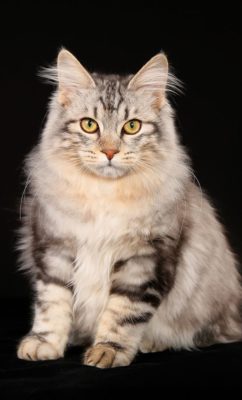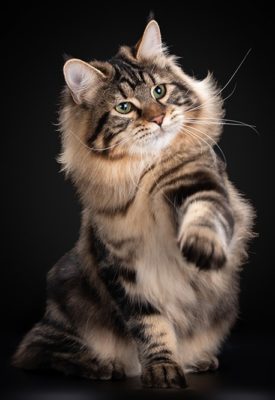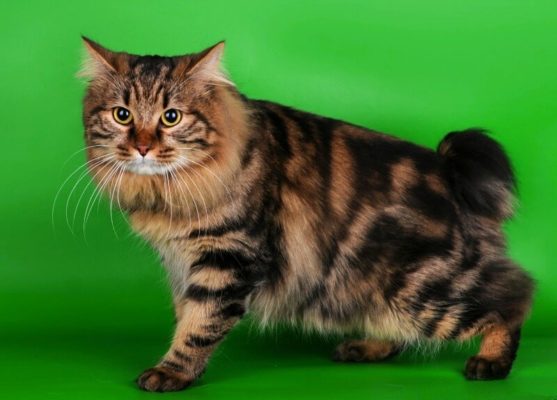Kurilian Bobtail Longhair
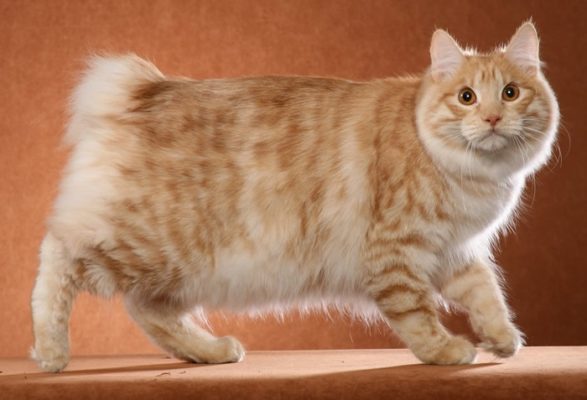
Unlike their wild ancestors, the Kurilian Bobtail Longhair is very friendly and affable. They quickly and strongly become attached to the family in which they live. At the same time, the cat always singles out one person as a real master. The pet is not one of the lazy cats; it leads an active way of life. Be prepared to give your pet a sufficient amount of time, play, and walk him. Otherwise, the cat will get bored and misdirect his energy.
Table of Contents
Breed Information
| Origin | Russia |
| Size | 25-30 cm |
| Weight | Males 5-7 kg Females 4-5 kg |
| Fur Type | Semi-long-haired |
| Color | Anyone |
| Lifestyle | Outdoors, indoors |
| Lifespan | 12-17 years |
| FIFe Classification | Category II: “Semi-long-haired” Breed designation – KBL |
| WCF Classification | Group 2: “Semi-long-haired” Breed designation – KBL |
| TICA Classification | KL |
| Group | Long-haired cats |
| Price | $800-1200 |
Breed Photos
Origin History
The breed first appeared in Russia in the 18th century. The ancestors of the cat were the wild Japanese bobtail and Siberian cat. They were brought to the Kuril Islands by settlers. Until the end of the XX century, the Kurilian Bobtail was not considered a separate breed and was mistaken for the Japanese.
In 1991, the Soviet felinological organization adopted the first standard of the breed. Four years later, the official registration of the Kurilian Bobtail with the World Cat Federation took place. Kurilians became frequent guests at European shows, and their popularity grew rapidly.
In 2004, the International Federation of Cats (FIFe) officially registered the breed. The most recent world organization to recognize the Kurilian Bobtail was the International Cat Association. It happened only in 2012.
Appearance
The Kurilian Bobtail Longhair is characterized by sexual dimorphism – cats are significantly larger than cats. In general, the animal is of medium size, has an elongated and muscular body. The chest of the cat is well developed; the backline is arched. The neck is short and muscular due to the thick fur that seems thick. It has a wedge-shaped head with rounded contours. The forehead is flat, passing into a straight, wide nose of moderate length. The chin is well developed and has a flowing outline.
The cat’s triangular ears are set high, far apart from each other. Slightly slanted eyes are shaped like a walnut. They are widely spaced; yellow, green, and blue colors are allowed. The tail is short, about three to eight centimeters long. The front limbs are much shorter than the hind limbs. The round paws are quite compact, and the claws are not retracted.
Character
Unlike their wild ancestors, the Kurilian Bobtail Longhair is very friendly and affable. They quickly and strongly become attached to the family in which they live. At the same time, the cat always singles out one person as a real master. The pet is not one of the lazy cats; it leads an active way of life. Be prepared to give your pet a sufficient amount of time, play, and walk him. Otherwise, the cat will get bored and misdirect his energy.
The Kurilian Bobtail Longhair adores children. He gladly plays with them and even forgives them careless touches. With other animals, the cat gets along just fine. The exceptions will be birds and rodents. From them, it is better to fence off the tailed hunter.
Care
Although the bobtail has a long coat, its undercoat is moderate. Therefore, it is enough to comb it twice a week with a metal brush. The pet loves water procedures, but it should be bathed rarely. Do it only if it gets dirty so as not to dry out its skin.
Bobtails’ claws do not retract completely, so they should be trimmed with a claw trimmer once a week. The eyes should be washed with a special product several times a week. Also, do not forget to monitor the ears’ condition and wipe them from clogs with cotton disks. It is advisable to brush the cat’s teeth daily, using a brush or a finger brush.
Education
The Kurilian Bobtail Longhair has remarkable intelligence. The animal understands about a thousand words, so there should be no problems with education. Cats are easily accustomed to the litter box and scratching post. Training an intelligent pet is also not difficult. The main thing is to teach commands in the form of a fun game, so it will be easier for the cat to learn everything.
If you disobey, a harsh tone will be enough. Raising your hand to the cat is not worth it. It is important to talk to the cat in time to realize its guilt and not do it again.
Common Diseases
Kurilian Bobtail Longhair has very good health. They are not prone to genetic diseases. The following diseases indeed occur in representatives of the breed:
- cracks and inflammation of the anus mucosa;
- prolapse of the rectum;
- urolithiasis;
- hemorrhoids.
It is worth watching your pet’s diet closely. Obesity can cause various diseases. Also, show your cat to the vet regularly and get vaccinations.
Nutrition
Pets of this breed are unpretentious about food. The cat can be fed both premium food and natural food. In the second case, the basis of the diet should be boiled meat. It is better to feed low-fat varieties: beef or chicken. Cereals, sea fish, and eggs are not a bad addition.
Do not forget about fruits, vegetables, and herbs. They will give the cat’s body the necessary vitamins and minerals. It is categorically not recommended to feed the bobtail potatoes, legumes, eggplant, baked goods, sweets. Raw or fried meat, dairy products, tubular bones, and smoked meat are also not suitable.
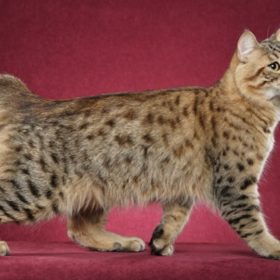 Pixie-bob Longhair
Pixie-bob Longhair Highland Fold
Highland Fold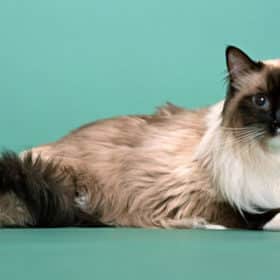 Ojos Azules Longhair
Ojos Azules Longhair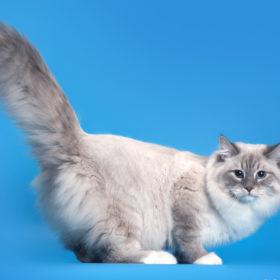 Neva Masquerade
Neva Masquerade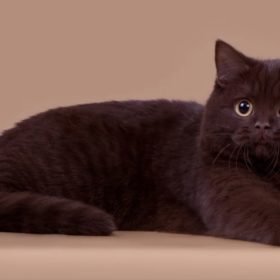 York Chocolate
York Chocolate Burmilla Longhair
Burmilla Longhair